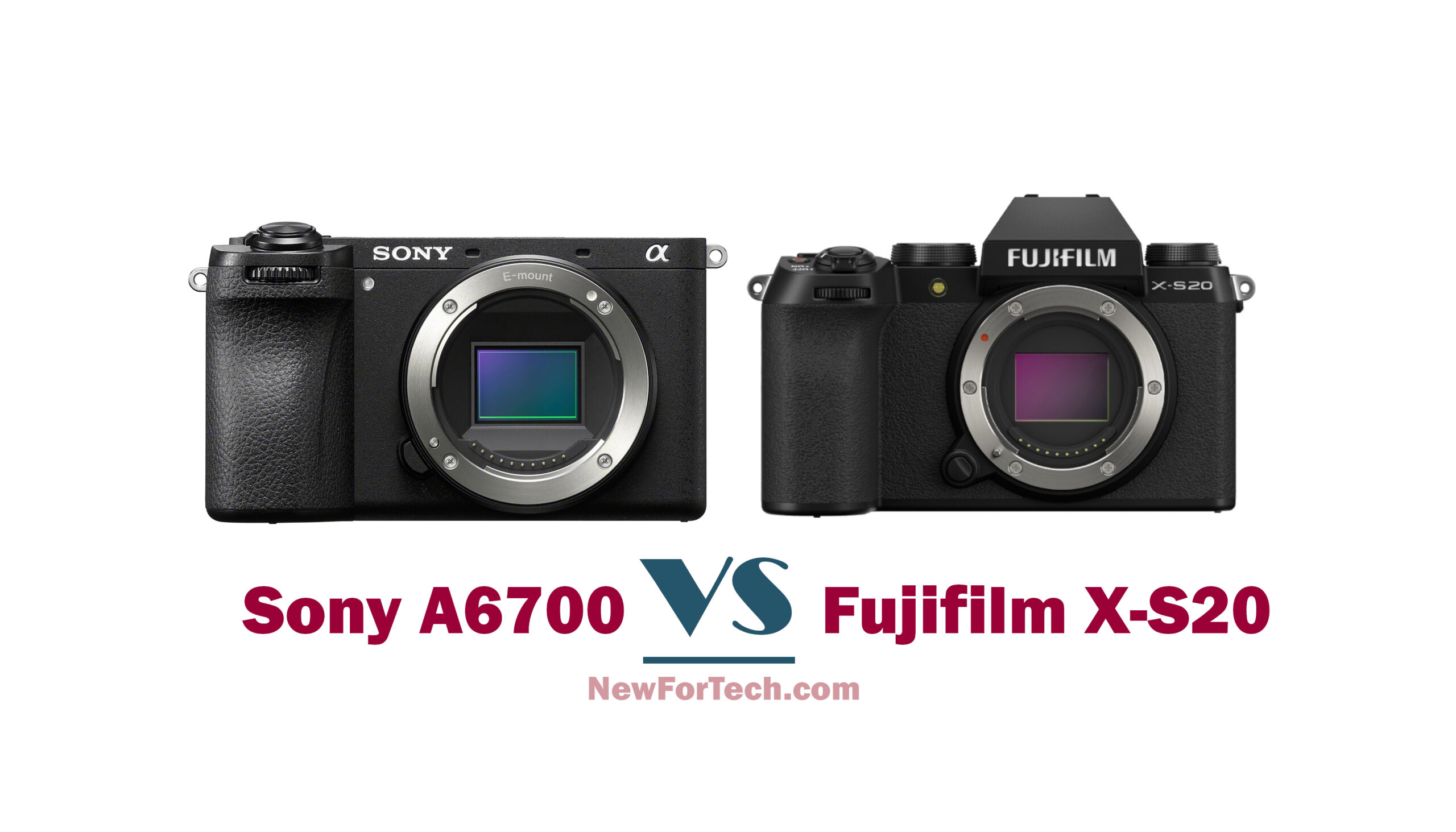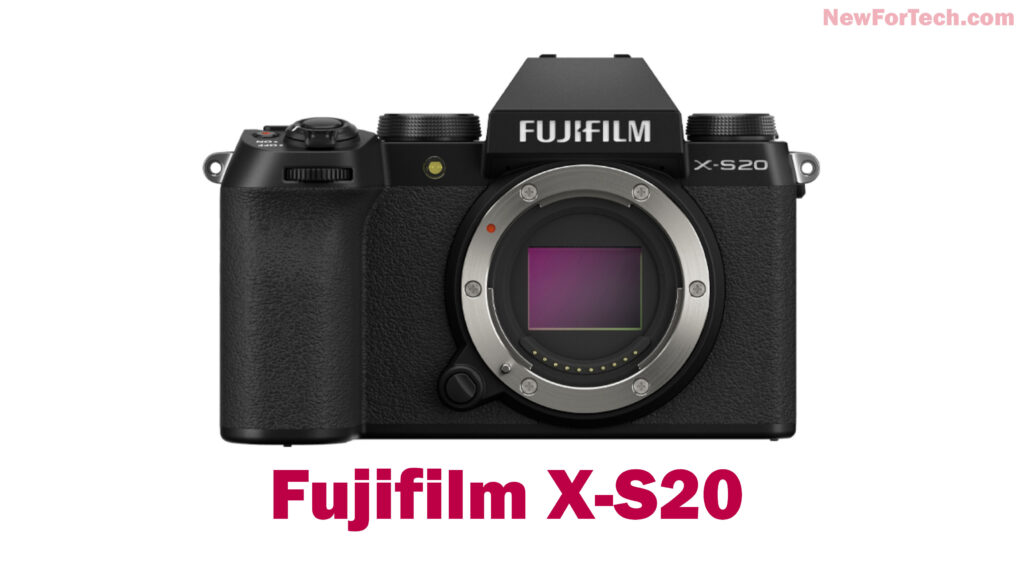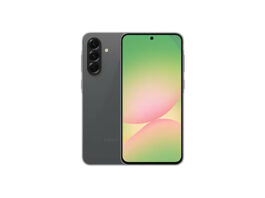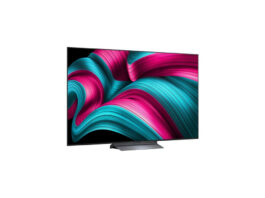Comparing Two Mid-Range Mirrorless Cameras for Hobbyists, Sony A6700 vs. Fujifilm X-S20.
Sony A6700
Boasting impressive AI-powered autofocus and a compact design, Sony’s flagship APS-C camera caters to travelers.
Pros:
- Exceptional AI-powered autofocus
- User-friendly physical controls
- Reliable battery life
- Diverse lens selection
Cons:
- Complex menu system for beginners
- Not ideal for video due to subpar IBIS
- 1.6x crop for 4K 120p slow-motion
- ISO 6400 introduces noticeable noise
Fujifilm X-S20
Enhanced video capabilities, beginner-friendly features, and an extended battery life build on the X-S10’s success.
Pros:
- Outstanding video features
- User-friendly for beginners
- Larger battery capacity
- Film Simulation modes
Cons:
- Higher price compared to its predecessor
- Lack of weatherproofing
In a competitive mid-range mirrorless market, Sony and Fujifilm vie for hobbyists’ attention. Both brands offer flagship APS-C cameras with remarkable subject-tracking abilities, driven by AI-powered autofocus.
Sony presents the A6700, a highly anticipated successor to the A6600. It maintains the travel-friendly form of its predecessor while incorporating the robust Real-time Recognition AF system and a 759-point phase detection array from the ZV-E1. These additions, along with enhanced video capabilities, earned it a favorable four-star rating in our Sony A6700 review. However, it comes with a premium price tag.
Fujifilm returns with the X-S20, an upgrade to the already capable X-S10, previously hailed as one of the best overall mirrorless cameras. Enthusiasts will appreciate the 6K/30p 4:2:2 10-bit internal recording and a vlogging mode designed for content creators. The larger battery is a notable advantage, although the price has increased, it remains more affordable than the A6700. Read our initial impressions in our hands-on Fujifilm X-S20 review.
With both cameras offering competitive specifications and vying for the mid-range all-rounder market, the question remains: which one to choose? In the comprehensive comparison below, we evaluate their key features to assist you in making an informed decision regarding the best mid-range mirrorless camera to suit your needs and budget.
Price and Availability Comparison: Sony A6700 vs. Fujifilm X-S20
| Sony A6700 | Fujifilm X-S20 | |
|---|---|---|
| Price | $1,400 / £1,450 / AU$2,499 body-only | $1,299 / £1,249 / AU$2,349 body-only |
| Availability | Expected in August 2023 | Launched in June 2023 |
Sony unveiled the A6700 on July 12, 2023, alongside the new ECM-M1 shotgun microphone. It’s set to be available in August 2023 at a body-only price of $1,400 / £1,450 / AU$2,499. This pricing is similar to what the A6600 had in 2019, offering more value with the A6700’s enhancements. However, it positions the A6700 as a premium choice among mid-range mirrorless cameras, especially when compared to the Fujifilm X-S20.
Fujifilm introduced the X-S20, a successor to the X-S10, on May 24, 2023, and it hit stores in June. The X-S20 is priced at $1,299 / £1,249 / AU$2,349 for the body only. You can also get it with Fujifilm’s XC 15-45mm lens for $1,399 / £1,349 / AU$2,499.
While the X-S20’s cost exceeds the X-S10’s 2020 body-only price of $999 / £949 / AU$1,699, the added expense comes with a range of new features. Nevertheless, in most markets, the X-S20 remains notably more affordable than the Sony A6700. For a similar price as the A6700 body, you can obtain the Fujifilm X-S20 with the mentioned lens bundle.
Sensor Comparison: Sony A6700 vs. Fujifilm X-S20
| Sony A6700 | Fujifilm X-S20 | |
|---|---|---|
| Sensor | 26MP APS-C sensor | 26.1MP APS-C sensor |
| Dimensions | 23 x 15.5mm | 23.5 x 15.6mm |
Examining sensor specifications, the Sony A6700 and Fujifilm X-S20 employ APS-C sensors, balancing size and performance. Both sensors measure around 23 x 15mm, with little difference in size.
Regarding resolution, the Sony A6700 features a 26MP Exmor R CMOS sensor, akin to the capable Sony FX30. Its backside illumination promises better low-light performance but may exhibit noise at ISO 6400 or higher.
The Fujifilm X-S20 matches the A6700 with a 26.1MP X-Trans CMOS 4 sensor, found in the X-S10 and X-T4. It also offers proven imaging capabilities for both photos and videos.
Real-world results may vary with lens choice. Sony’s E mount offers a broad range of compatible lenses, while Fujifilm’s X mount enjoys substantial support.
Our experience with the Sony A6700 revealed crisp, detailed results with good dynamic range, though the metering system tended to underexpose in overcast conditions. While our time with the Fujifilm X-S20 has been limited, initial impressions suggest it competes well in the APS-C arena. In our Fujifilm X-S10 review, the same sensor was praised as a “tried-and-tested performer” and the “best of its kind.”
Video Comparison: Sony A6700 vs. Fujifilm X-S20
| Sony A6700 | Fujifilm X-S20 | |
|---|---|---|
| Video | 4K / 60p and 4K / 120p | 6.2K / 30p and 4K / 60p |
| Auto-framing | AI-powered auto-framing | Auto subject detection |
| Stabilization | Active SteadyShot | Up to 7.0 stops effective |
Both cameras are versatile, and intended for both video and still photography.
The Sony A6700 shoots 4K video at 60fps, oversampled from 6K without pixel binning, with a slight 1.04x crop. Slow-motion 4K at 120fps incurs a 1.6x crop. It offers 10-bit depth and 4:2:2 color sampling, supporting various color profiles, including S-Log3 and S-Cinetone. However, it has one UHS-II SD card slot, leading to recording time limitations due to overheating.
The A6700 excels in AI-powered auto-framing and auto-cropping subjects for solo vlogging. Image stabilization is available, but it doesn’t perform flawlessly in stabilizing footsteps.
Fujifilm’s X-S20 records sharper video at 6.2K resolution, with a maximum frame rate of 30fps, utilizing the full sensor dimensions. It also records 10-bit footage with F-Log and F-Log2 support. Slow-motion 4K is capped at 60fps.
The X-S20 lacks Sony’s auto-framing but offers auto-subject tracking and a dedicated vlogging mode for novices. It has a single UHS-II slot but boasts more flexible recording limits, with an optional cooling accessory extending recording times.
The X-S20’s image stabilization claims effectiveness up to 7.0 stops, surpassing the A6700’s 5.0 stops, although real-world testing is necessary.
Both cameras employ H.265 high-efficiency video coding for modern video capture.
Build & Weight Comparison: Sony A6700 vs. Fujifilm X-S20
| Sony A6700 | Fujifilm X-S20 | |
|---|---|---|
| Weight | 493g | 491g |
| Viewfinder | 2.36m-dot EVF | Deep grip, taller with a hump |
| Display | 3-inch vari-angle touchscreen | 3-inch vari-angle touchscreen |
| Design | Compact, flat-sided | Chunky retro design |
| Grip | Deeper grip, streamlined | Deep grip, taller with hump |
| Controls | Refinements, customizable | AF joystick, fewer top dials |
| Materials | Well-built, trusty | Magnesium alloy, premium feel |
| Weather Seal | – | Not weather-sealed |
| Connectivity | USB-C, Micro HDMI | USB-C, Micro HDMI, mic, headphone |
While image quality is important, a camera’s handling matters. The Sony A6700 and Fujifilm X-S20, both APS-C cameras, exhibit distinct design and handling approaches.
In terms of weight, they’re almost identical (493g vs. 491g) with batteries and memory cards. They share 2.36m-dot electronic viewfinders and 3-inch vari-angle touchscreens.
The Sony A6700, like its predecessor A6600, boasts a compact, streamlined design for easy travel. It features a simpler, flat-sided design with refined controls, including new dials and customizable buttons. Despite a left-side viewfinder, it’s comfortable to operate and well-built. However, the menu system remains complex, though it offers full touchscreen functionality.
In contrast, the Fujifilm X-S20 emulates the chunky retro design of the X-S10, providing a balanced camera with a deep grip. It’s taller, thanks to the angular viewfinder hump, making it less pocket-friendly but more ergonomic. Despite having fewer top dials, it offers intuitive controls, including an AF joystick. The magnesium alloy build imparts a premium feel, but it lacks weather sealing, unlike the A6700.
Both cameras include USB-C and Micro HDMI ports, along with microphone and headphone slots for vlogging purposes.
Additional Features Comparison: Sony A6700 vs. Fujifilm X-S20
| Sony A6700 | Fujifilm X-S20 | |
|---|---|---|
| AF System | 759-point hybrid phase/contrast | 425-point hybrid phase/contrast |
| Processor | Bionz XR | X-Processor 5 |
| AI Technology | Real-time Recognition AF | Deep-learning technology |
| Scene Detection | Effective | Initial feedback on effectiveness |
| Image Stabilization | Up to five stops | Up to seven stops |
| Burst Speeds | 11fps (mechanical) | 8fps (mechanical), 30fps (electronic) |
| Battery | FZ-100 cell | NP-W235 battery pack |
In terms of performance, the Sony A6700 packs flagship power in a compact frame. Its Real-time Recognition AF with 759 detection points delivers precise subject tracking, powered by the Bionz XR processor, making it highly effective, especially for specific categories.
The X-S20, equipped with Fujifilm’s X-Processor 5, employs AI technology for scene and subject recognition. While scene detection appears promising, subject tracking performance is yet to be fully evaluated. Notably, it offers fewer AF detection points (459).
The A6700’s image stabilization is strong, providing up to five stops of stability, while the X-S20 offers an impressive seven stops. The A6700 excels with mechanical burst shooting at 11fps and a robust FZ-100 battery.
Conversely, the X-S20 offers an NP-W235 battery pack for extended battery life. It has slower mechanical burst speeds at 8fps but compensates with an electronic shutter capable of capturing JPEG stills at up to 30fps (with a 1.25x crop).
Choosing Between Sony A6700 and Fujifilm X-S20
The Sony A6700 and Fujifilm X-S20 seem quite alike at first glance—mid-range APS-C cameras with AI autofocus, solid handling, and comparable resolutions. Yet, the choice isn’t straightforward.
Sony A6700 offers flagship AI-powered performance, weather-sealing, and lens compatibility. However, its price edges closer to enthusiast cameras like the Fujifilm X-T5, raising expectations for design, sensor resolution, or dual card slots.
Each camera has its merits: The x-S20 excels in overall video sharpness, while the A6700 shines in slow motion. X-S20 boasts more image stabilization stops, while A6700 leads in subject tracking based on early tests.
If you’re brand-agnostic, the Fujifilm X-S20 offers a compelling, cost-effective choice. It delivers comparable image quality and performance, along with favored design and handling.
Your decision depends on your specific preferences, budget, and whether you’re loyal to a particular brand.
Discover more from NewForTech
Subscribe to get the latest posts sent to your email.







